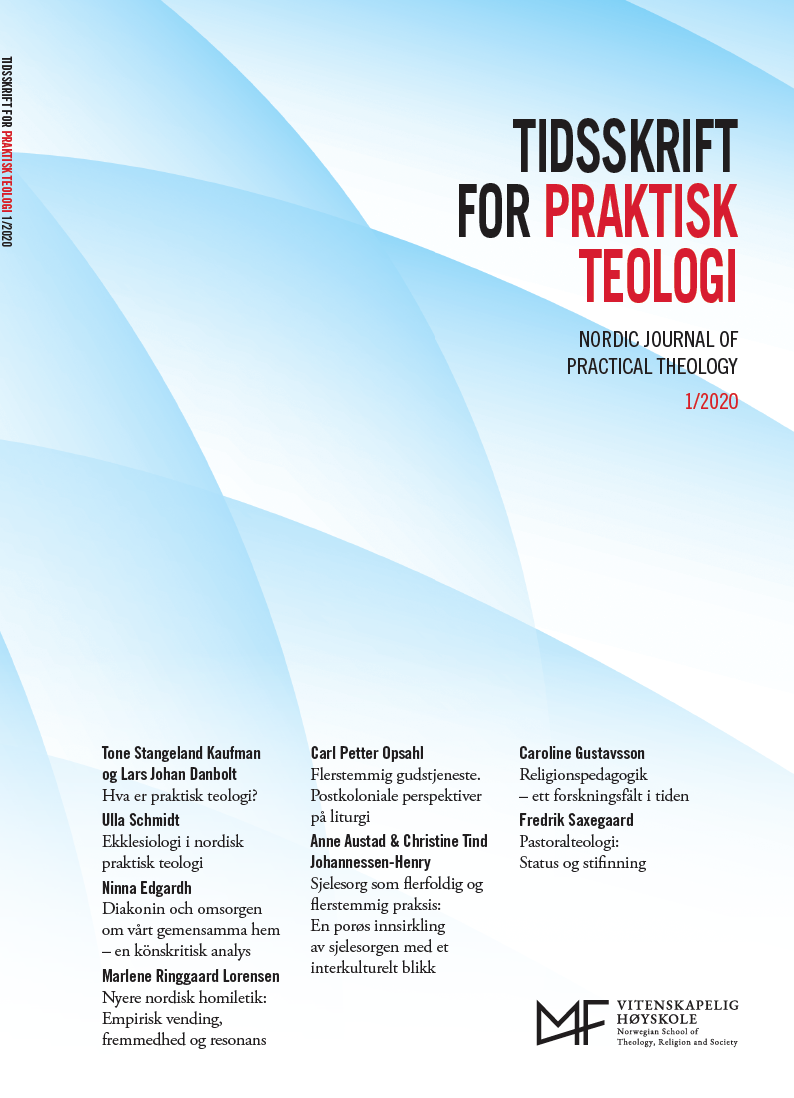Nyere nordisk homiletikk: Empirisk vending, fremmedhet og resonans
DOI:
https://doi.org/10.48626/tpt.v37i1.5304Sammendrag
The field of homiletics is situated in a tension field between biblical texts, theological traditions and contemporary contexts. The history of homiletics shows a continuous shift of focus from a theology of preaching, preaching texts, listener and preacher. The most recent development of homiletics in the Nordic countries (Finland, Sweden, Norway and Denmark) appears to have favored an emphasis on specific groups of listeners of preaching and the world in front of the biblical texts - rather than the worlds behind or within the text. Examples of this are empirical studies of sermons in light of the refugee situation in 2015, World War II, children’s and youth’s interaction with preaching, collaborative preaching, casualia-preaching etc. The question to be pursued in the following is whether the turn toward the listener and worlds in front of the text happens at the exclusion of the other points of focus - and to what extent it leads to renewed interest and insight in some of the other aspects of preaching. In order to discuss these questions, the recent development is analyzed in light of the theories of the German sociologist, Hartmut Rosa’s concept of Resonance (Rosa 2016, 2018) as well as the Northern-American paradigm, Other-wise preaching (McClure 2001).
Nedlastinger
Statistikk
Nedlastinger
Publisert
Utgave
Seksjon
Lisens
Opphavsrett 2020 Tidsskrift for Praktisk Teologi

Dette verket er lisensiert under Creative Commons Attribution-NonCommercial-NoDerivatives 4.0 International License.





